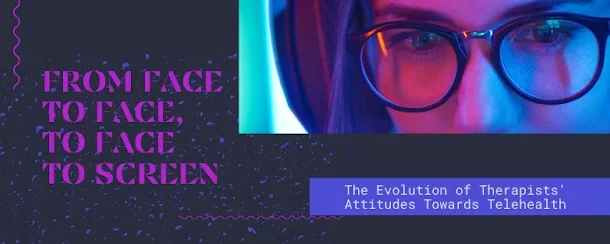
While Teletherapy has given a wonderful and beneficial option to many during this time struggling to connect with their clients, it has also raised fears and concerns in our parents. Many wonder about the long term effects and implications of fully online therapy, and additionally if this type of therapy will ever truly be comparable to the physical and personable style that was the norm prior to the pandemic.
Good news, parents! Not only is teletherapy a viable and enriching option for your child, but we are here to answer your most pressing concerns and questions over the last few months. Our very own Catherine Ving, M.S. CCC-SLP, and leading Speech-Language Pathologist, has provided some expert responses on this topic. Without further ado, here are the top 8 most asked questions by parents of children who require therapy services, and specialist answers to match them:
1) How do I know if my child is right for teletherapy?
“Everyone should be given equal opportunity when it comes to teletherapy. Students that are able to attend to a computer screen and listen/respond to directions may be suitable for teletherapy. Students that have complex therapeutic needs, needs hands-on guidance, has significant hearing/vision/cognitive deficits may not be appropriate for teletherapy; however, every student should be given the opportunity to try. With the right paraprofessional or support, these students may still be able to benefit from teletherapy.”
2) How much involvement will I be having in my child’s teletherapy session?
“Parents play an integral part to their child’s teletherapy session. If a parent regularly participates in sessions, the child will receive greater benefit from teletherapy as the parents will have learned techniques and strategies to use during their everyday activities. It is important for a clinician to set aside time to consult with parents about their role as they will benefit from training on how a cueing hierarchy would work with their child. Parents can observe the sessions and then learn how to help generalize the skills outside of therapy.”
3) What are the negative effects of teletherapy on my child and how can they be mitigated?
“Some negative effects of teletherapy would be additional screen time, lack of hands on support to redirect attention, or lack of hands on approach to facilitate accurate speech production. These can be mitigated by rearranging a child’s access to screen time when not in therapy, having a parent/support person present during sessions to help with redirection, and also having a parent present to learn strategies from the clinician.”
4) Is teletherapy even comparable to in-home therapy? Why?
“Teletherapy most definitely is comparable to in-home therapy for a vast majority of the clients that we serve. We are able to provide instant feedback, create situations and opportunities to work on goals, and establish a strong client-clinician relationship. There are differences such as with teletherapy, we lose the in-person face to face contact with the client so it is more challenging to redirect when the client is off task. Hence, The clinician must organize and frame their sessions to provide enough hierarchical support in order to engage and maintain attention.”
5) What do I need to create a sustainable and positive therapy environment at home for my child?
“The environment is important. Discuss where and how the camera and device should be set up. For young children and parent coaching based sessions, the camera should face the whole play area. For older children that can sit in front of the camera, the camera should not be facing a window as that will compromise lighting. Discuss with the parent/clinician whether siblings want to be involved or would be helpful during play and find ways to incorporate them. Parent involvement is key and having the discussion and understanding that the clinician will be giving suggestions, comments, and encouraging your participation. It is also important to set the child’s expectations for teletherapy. Parents, client, and clinician need to be on the same page. There needs to be clear expectations and open communication between family and clinician.”
6) What can I do to help my child get used to or become comfortable with technology, but not too reliant on it?
“Allow the child to explore technology and have set times that they are able to use/play with technology. It would be helpful to have technology strictly for “therapy” purposes and other items for “play” so that the child does not become confused between playtime and worktime.”
7) How can I tell if a therapist is the right fit for my child, and will be able to provide expert care? What are some things to look out for?
“Does the clinician match your needs? Does the clinician match your communication style? Do you feel comfortable talking to and reaching out to your therapist? Do you feel like your child attends to the clinician and is able to establish a relationship? Is the clinician responsive to your questions and answers them clearly? Is your clinician engaging, providing feedback, adjusting their therapy to match your child’s needs?”
8) What is the greatest benefit of teletherapy for children and their families?
“Teletherapy provides more flexibility for families (decreases travel time), improves timeliness, increases consistency, avoids regression, and is engaging for kids!”
Teletherapy Takeaways
As Catherine has shown us, teletherapy is not only a good alternative, but an efficient permanent replacement for in-person pediatric therapy in light of COVID-19. Parents need not fear or worry, as teletherapy can meet all of your children’s needs, while also offering a convenient and immersive therapy experience. Therapists and clinicians are able to get a look into the real-time home setting and environment of the child via teletherapy, and don’t have to physically spend the time driving from home to home to meet patients. There are many positives to experiencing therapy this way, and hopefully this article has helped to portray the beneficial nature of the world of Telehealth.
Get the latest from ReadySetConnect. Subscribe to our Newsletter!
Stay updated with the latest industry news, insights, our releases, and exclusive offers. Unsubscribe anytime
Contact Us
Las Vegas, NV 89144




